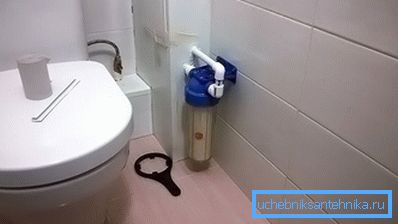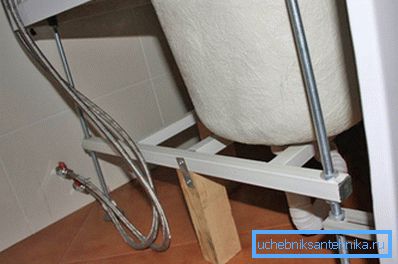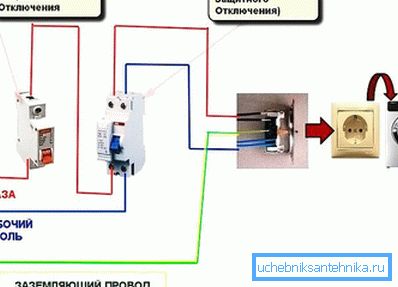How to connect a washing machine yourself step by step
Modern active, bustling city life contributes to the acquisition and use of household electrical appliances at a maximum. The washing machines are designed to significantly reduce the physical and temporary costs of routine washing. In the article we will talk about how to connect the washing machine yourself, we will give step by step instructions on how to connect to the water supply, sewage and electricity. Compliance with the instructions during installation will increase the reliability of connections and prevent leakage, flooding, ensure the safe operation of electrical appliances.
Choosing an installation site

In city apartments with modern layouts that have large areas of a bathroom / toilet, as well as combined bathrooms, it’s easy to choose a place to install. Find the same opportunity to locate the washing machine in the old small apartments is difficult.
The washing machine should be located near the wiring of the water supply and sewage systems. The presence of a nearby grounding outlet is recommended, but this is optional. If the wiring inside the walls can not be closer to the car, you will need an extension cord.
With the system of water supply and sewage such a trick will not work. That is, a room or a corridor for washing equipment is not the right place. You can install the car in the kitchen, hiding it in the headset, or in the bathroom, including dismantling the sink. The installation site must have a solid hard floor, in order to avoid unnecessary vibration and noise.
Preparing to install

Washing machine refers to a large and heavy household appliances. It has rigid packaging to avoid defects and damage during transport. After being delivered to the dwelling, household appliances are freed from the original packaging and inspect the presence of defects on the surface.
Before preparing for installation, it is necessary to carefully read the installation and operating instructions. One of the main components is the engine and the drum, which is fixed with special shipping bolts during transportation. Bolts must be unscrewed to avoid damage to the components when first turned on. Warranty on equipment for improper use does not apply.
Shipping bolts, staples, packaging should be stored. They will be useful if you need transportation to a service center or transportation to another housing.
The legs must be adjusted to the place of installation so that the machine is exactly on the vertical and horizontal levels in the respective planes without tilting and reeling.
Connection to the water supply

The automatic washing machine works with a constant supply of water, which automatically heats up to the required temperature. Therefore, the machine is connected to the cold water system.
All work must be carried out when the water is turned off, either by blocking the entire riser or by a shut-off valve for internal wiring. All threaded connections are sealed with fum-tape or sanitary flax.
When planning the bathroom in new buildings, the place is determined where the car will stand and the distribution of the water supply system is made with this in mind. At the end of the pipe is installed ball valve to which the hose is connected.
If it is not possible to change the wiring, then they are connected to the water supply system in a convenient place, using additional flexible hoses in a metal braid for extension:
- Connection via an additionally installed tee with a ball valve at the junction of the flexible pipe to the drain tank.
- Connection through the same tee with a ball valve at the junction of the flexible pipe, only from the mixer for the sink to the water pipe.
- Connect through a tie-in box with a ball valve into the water pipe. In this case, a part of the pipe is cut, a thread is cut with a screw die at the remaining ends of the pipe at the cut-out. After that, a tee with a ball valve and additional sgon are installed in the place of the tube cut-out.
At installation it is necessary to select ball valves, flexible hoses taking into account the internal and external threads at the joints.
Connect to the sewer

Dirty and soapy water is discharged into the sewage system. Temporary drainage through a simple placement of the outlet hose into the toilet or bathroom is not considered, because it is not aesthetically pleasing, inconvenient, does not allow to use the bathroom for its intended purpose during washing, the rest of dirty water will always be drained from the hose when it is pulled from the toilet.

Connect the drain hose to the sewage system in the following ways:
- Connect to an additional acceptable opening in the siphon under the sink, which has a special design. The outlet must be higher than the siphon knee.
- Connection directly to the sewer pipe through a tee having two inlets and one outlet. Such a tee can be installed in the place of discharge under the sink sink.
- Supply of plastic sewage to the place of installation of the machine. This option is used if the washing machine is far from the sewer system, and the length of the drain hose is not enough. Plastic sewage is collected from the corresponding branches, corners, tees, like the designer.
When connecting the hose to the pipes, it must be bent in the shape of an uppercase letter g (g). This will avoid sewage and unpleasant smell in the car.
At the junction may need a special rubber coupling.
Power supply

Connection requirements:
- the cross section of the wiring must match the power consumption;
- required grounding.
If knowledge does not allow to correctly calculate the parameters of electrical wiring, protective devices (RCDs, machines), the rules of electrical work, it is strongly recommended to entrust this work to professionals. It is better to involve an electrician in these works than to expose one’s own life and family to danger.